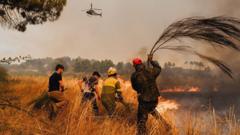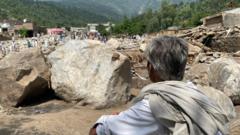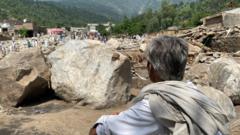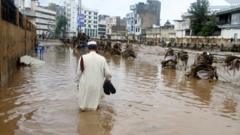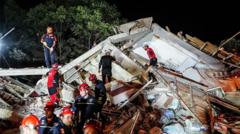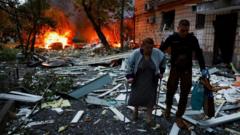The Jet Set nightclub in Santo Domingo, Dominican Republic, witnessed an unimaginable disaster when its roof collapsed during a live concert on April 8. The catastrophe resulted in the death of 232 people and left around 200 more trapped beneath the rubble of concrete and heavy machinery. Eyewitness accounts indicate that alarm bells were ringing just before the incident, as patrons experienced sprinkles of plaster and water falling from the ceiling, which they initially dismissed as minor annoyances.
Investigations reveal that the club had a troubling history of noise complaints, leading some to wonder if the vibrant sounds of live music contributed to the tragedy. The roof was not only burdened with heavy air-conditioning units and water tanks but was apparently in disrepair, as noted by patrons who claimed to recognize structural issues from their own experiences in construction.
Local resident Nelson Pimentel, one of the attendees that fateful night, commented on the ominous signs, stating, “God warned us, but the music and the party didn’t let people hear it.” Survivors had mere moments to escape once larger debris fell, causing a humid cacophony of panic among crowds of politicians, bankers, and civil servants who filled the venue.
The Jet Set collapse highlights a broader issue within the Dominican Republic, where outdated building codes and inconsistencies in inspection efforts have come under increased scrutiny. Following multiple building collapses in recent years, critics urge the government to reform the structural integrity assessment process to prevent further tragedies. As the nation grieves for the lives lost, a distinct question remains: could proper oversight have averted such an immense loss of life?










